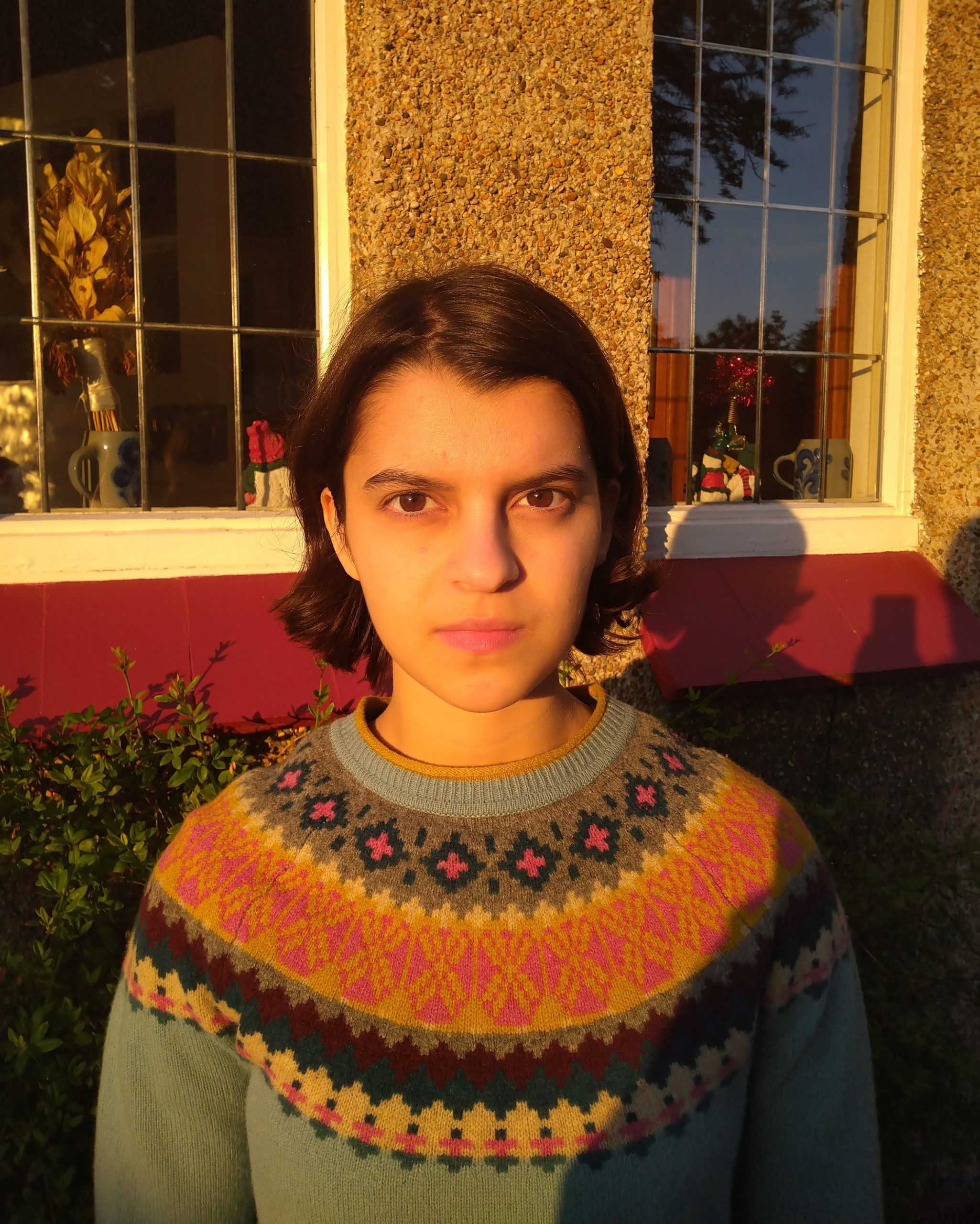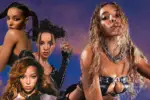For the past month, one interest has entirely consumed my mind and overruled all other hobbies — roller-skating. After seeing my stepdad effortlessly glide down the driveway in his recently purchased roller skates, one thought quietly bloomed in my head and stuck with me: “What if I could do that?”
Fast-forward through weeks of deliberating whether I should buy roller skates, hours of exhausting internet research about which ones to buy, worries about protective equipment and watching colorful roller-skating videos on YouTube. Now, I find my other priorities pushed aside to make room for the new space that the hobby unexpectedly carved out in my life.
The following have become regular occurrences in my lockdown routine: gliding on concrete at least four times a week (when the weather permits), bruised knees and scraped hands from frequent falling, and ranting about how dangerous it is to see improperly tied skates promoted in models’ pictures for roller-skating brands.
New Trend?
It appears as if I, like the rest of the internet, have fallen down the rabbit hole into the new online craze of roller-skating. The recent resurgence — the retro sport that was previously popular in the ‘30s, ‘70s and ‘90s — is primarily being attributed to Ana Coto, a 29-year-old actress and dancer who posted a video of herself on TikTok serenely skating backwards down an empty road to Jennifer Lopez’s song “Jenny From the Block.”
@anaocto Call me Jenny 💋 @jlo #rollerskating #jlotiktokchallenge
♬ Jenny from the Block (Bronx Remix No Rap Edit) – Jennifer Lopez
The video was posted in late April and has since gained viral status, garnering over 14 million views on TikTok alone and inspiring dozens of other popular skating videos, in the vein of the app’s copycat culture.
Google searches for roller skates skyrocketed, reaching their peak popularity in May. Countless media articles framed roller-skating as a revitalized trend, and people who had never shown any interest in what was previously a “niche” hobby are now worshipping Coto as the “reigning queen of roller-skating,” as if she had somehow invented it.
Similarly, those in the world of fashion were quick to capitalize upon this newfound trend, with outlets like Urban Outfitters selling prettily patterned roller skates as if they were just another item of fashionable footwear and Glamour (of all sources) advising people on what roller skates to buy. Roller-skating, and its succinctly formulated aesthetic (sun-drenched, brightly colored and retro) captured the internet’s short attention span and wallets, with Vogue declaring, “There’s a Worldwide Shortage of Roller Skates.”
Unbeknownst to some devoted TikTokers, roller-skating is not a new phenomenon, not even in the online world. I, for one, did not find out about it via TikTok, seeing as I have never used the app.
A small, but lively online roller-skating community has existed for years, as evidenced by the skating YouTube channels IndyJammaJones, QueerGirlStraightSkates, DirtySchoolofSkate and KarentheKarrot, to name a few. To these dedicated women on wheels, roller-skating is more than just a passing trend or casual hobby; it is a long-standing passion that they have held in their lives — one that brings them purpose and joy.
Extending beyond the internet, roller-skating is not a mere trend, but a major part of many other people’s lives, culture and history, and has been for decades.
History and Culture
For example, the 2019 documentary “United Skates” focused on the legacy of Black roller rinks and the fight to save them. The documentary highlights how deeply entrenched roller-skating is in Black culture and history in the U.S. With such rinks on the verge of being lost, roller-skating became a lifeblood, a unique expression of Black identity and a “profound cultural connector,” linking African Americans to their past generations.
Additionally, roller-skating played an integral role in the civil rights movement, with roller rinks commonly acting as the sites of peaceful protests against segregation. One semiprofessional African American skater, Ledger Smith, skated 685 miles from Chicago to D.C. to attend the March on Washington, wearing a sash inscribed with the word “FREEDOM” around his torso. This act was described by Reggie Brown, a 36-year-old Black roller skater from New York, as “rolling with purpose,” a recreational activity turned activism.
Similarly, roller-skating has been the preferred leisure activity for other marginalized groups in society. As Coto herself acknowledges, roller-skating provides an avenue for the expression of queer identity; the vintage roller rink Moonlight Rollerway provides a safe place for members of the LGBTQ+ community in Los Angeles to meet and party.
Roller-skating is also linked to feminism as a mode of female empowerment, showcased in the 2009 roller derby film “Whip It” and the more recent HBO series “Sharp Objects.” A New York Times article lauds roller-skating as a feature of “Sharp Objects” that gives its young female protagonists “agency” and encourages women “to use their bodies in ways that they have never been encouraged to do before.” It’s a form of movement that not only defies “patriarchal norms,” but also provides a means for escape through the freedom that roller-skating so easily presents.
Personal Experience
I can vouch for roller-skating’s liberating effects; after donning my protective gear and lacing my skates, which add an inch or so to my height, I feel more confident and powerful when skating — a swifter, stronger version of myself.
This heightened self-awareness is perhaps what imbues my skating experience with a sense of unreality. Roller-skating feels as if it takes place in another world. The first time I went roller-skating outside in the park, it felt unreal. I couldn’t believe that I was actually doing this activity, this sport that had been at the back of my subconscious mind but never fully acknowledged by me before.
I had always wanted to try out figure skating and skateboarding, but was not graceful enough for one, and lacked the coordination for the other. Roller-skating seems to have struck a balance between those two aspirations — a strange hybrid, something in between.
My second roller-skating foray through the park was very different, but just as otherworldly as the first. This time, as I managed to successfully glide unhindered for a while, it was me who felt unreal as a roller skater. It’s a form of movement that can only be described as a peculiar combination of human and vehicle. Somehow, the world of roller-skating still doesn’t feel real to me, although it is so deeply embedded in my life, and many other people’s.
I continue to be surprised at myself — for having learned a new skill, for launching myself to the ground on my borrowed knee pads every time I wanted to slow down and for actually managing to glide partway through the park.
Although I have experienced the more grounded aspects of roller-skating, like the terror that I feel every time I skate; becoming acquainted with regular thigh and tailbone pain; and sometimes having to drag myself out of the comforts offered by a warm house and alluring book, roller-skating is above all, fantastical.
Perhaps this is connected to the element of nostalgia with the retro sport and the enticing tangle of aesthetics (pastel knee pads, holographic roller skates and shimmering metallic helmets) depicted in online roller-skating videos.
Despite having learned the hard way that roller-skating is a terrifying, exhilarating and sometimes dangerous hobby, the idea of roller-skating still retains the wondrous, novel glow that drew me in initially.

















